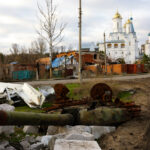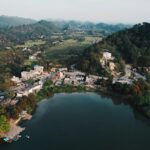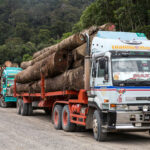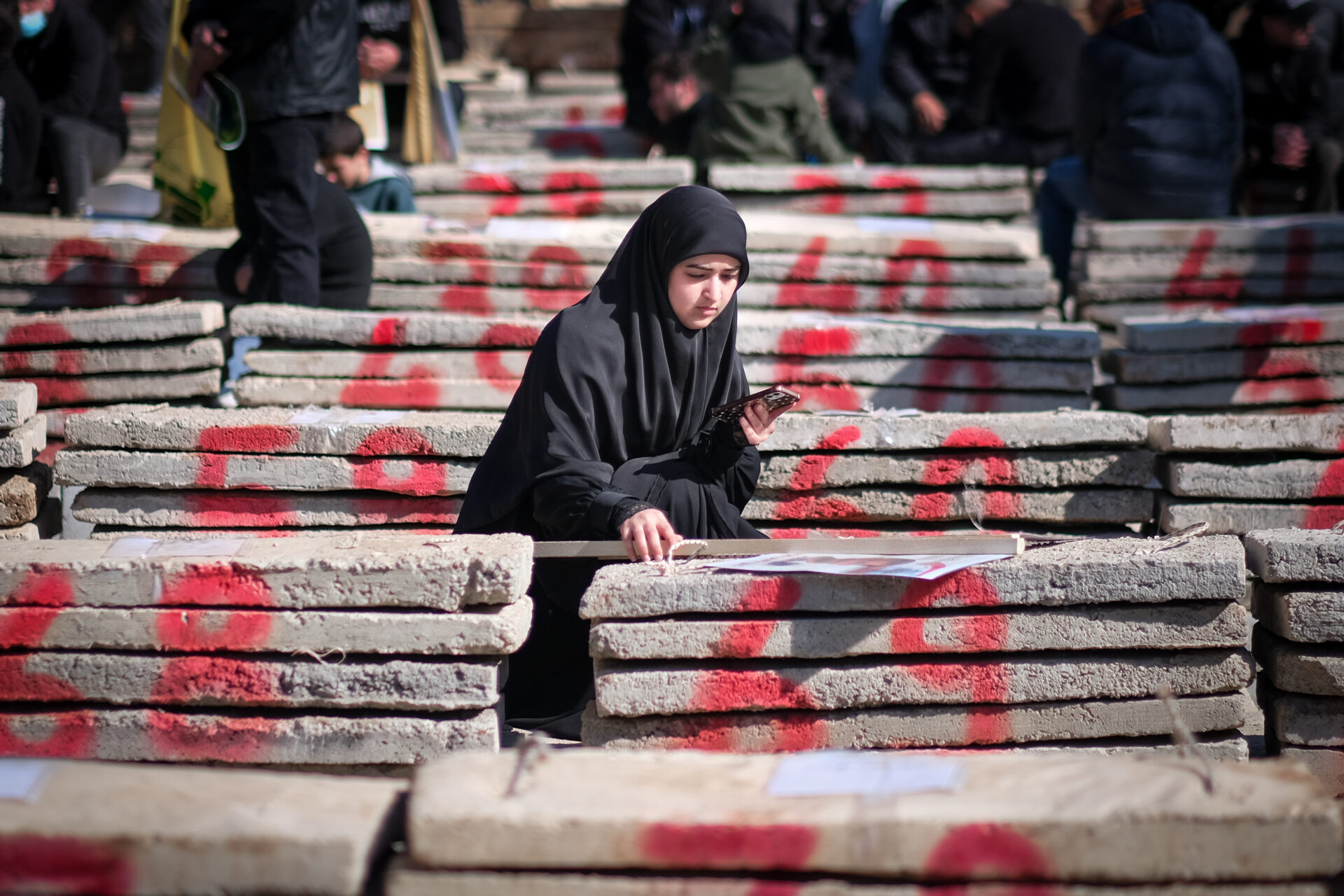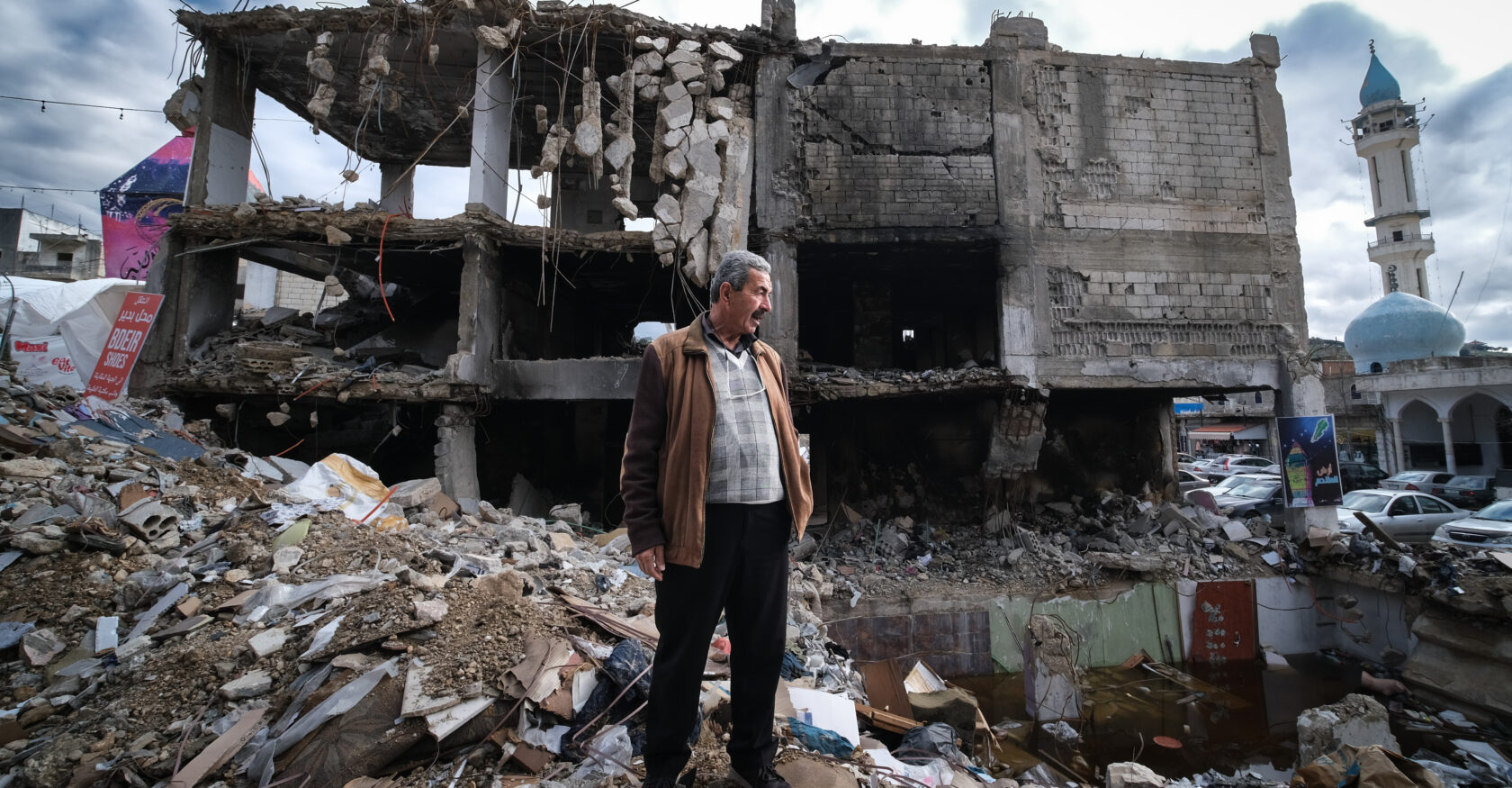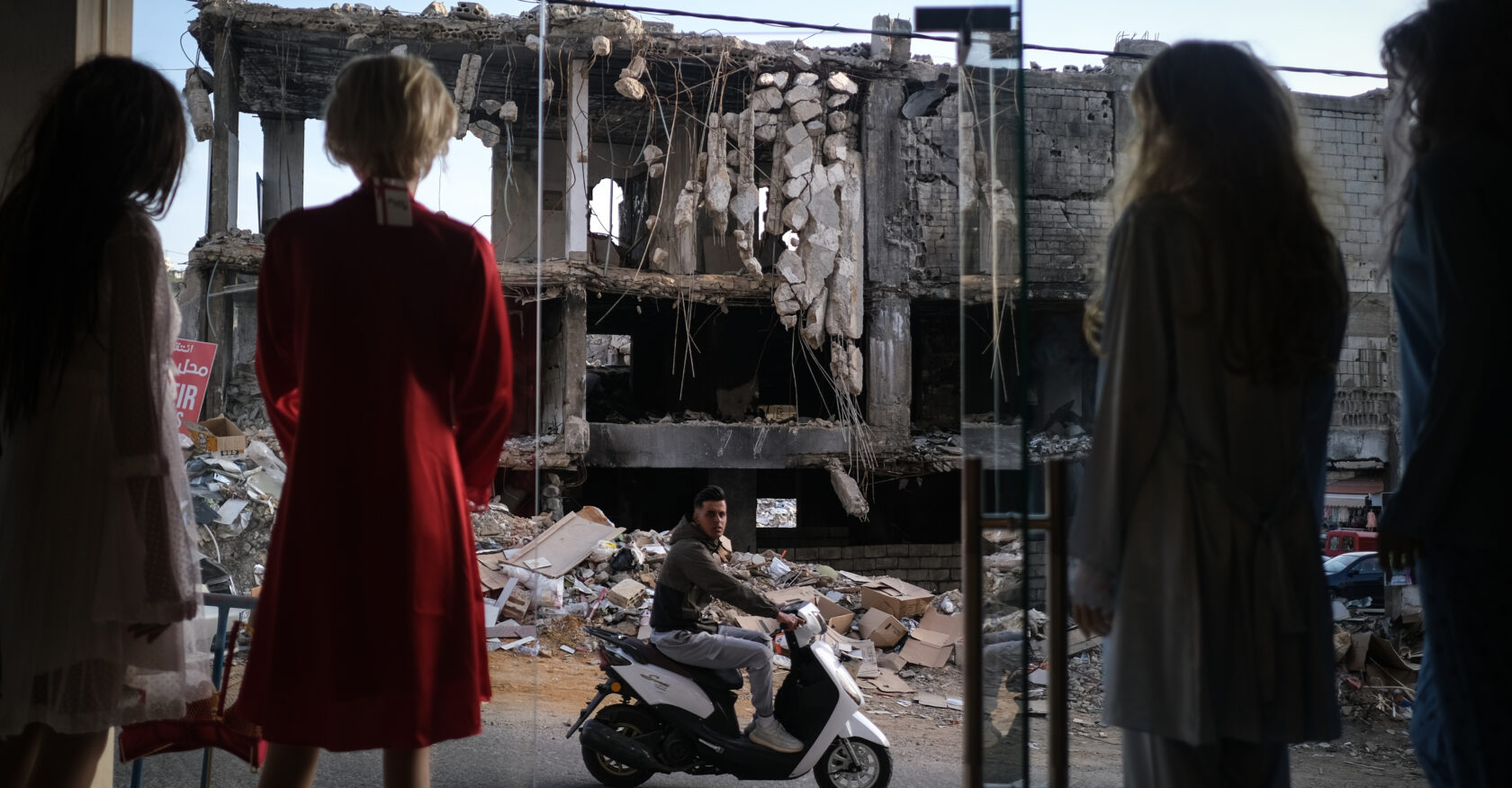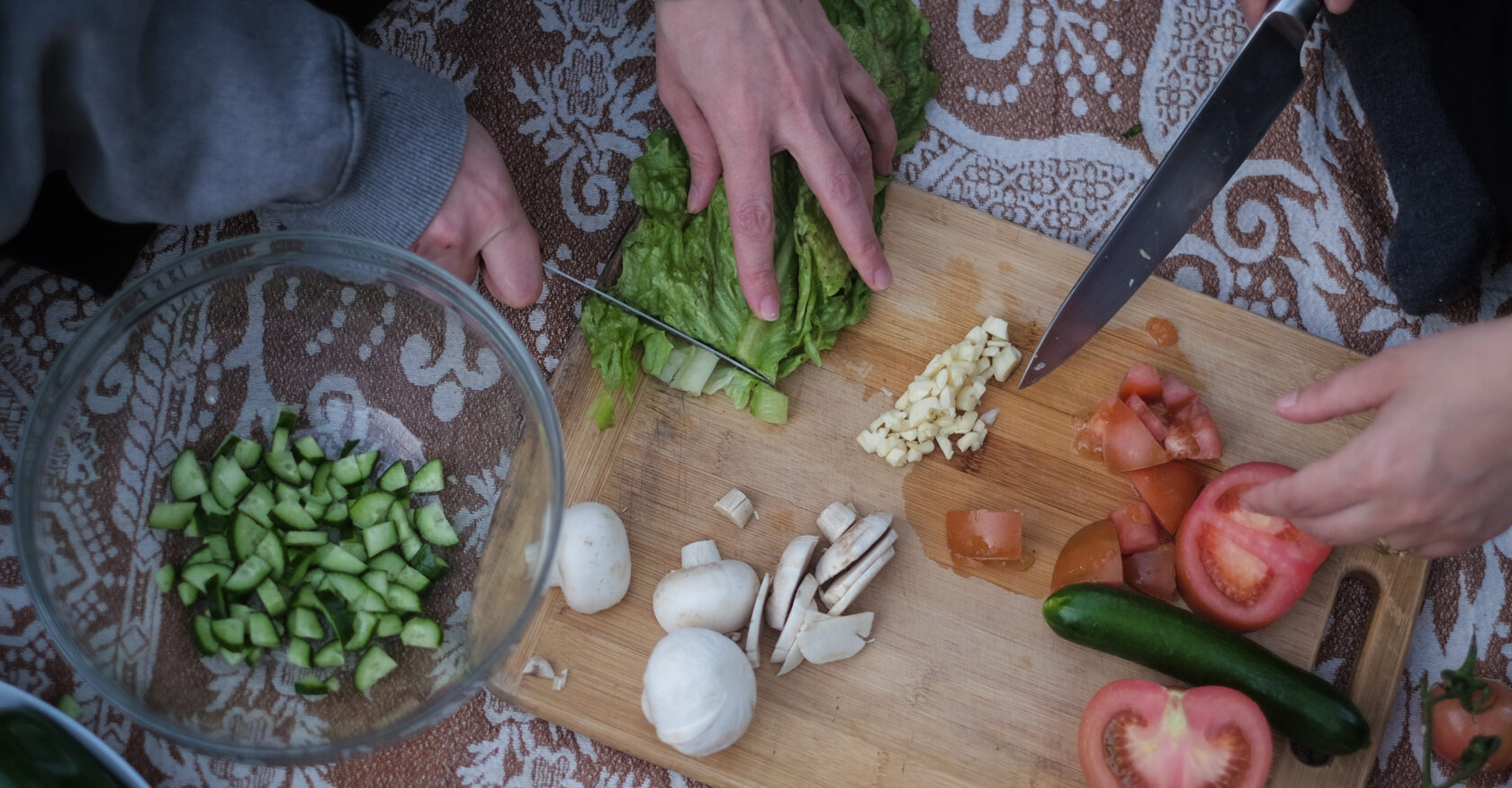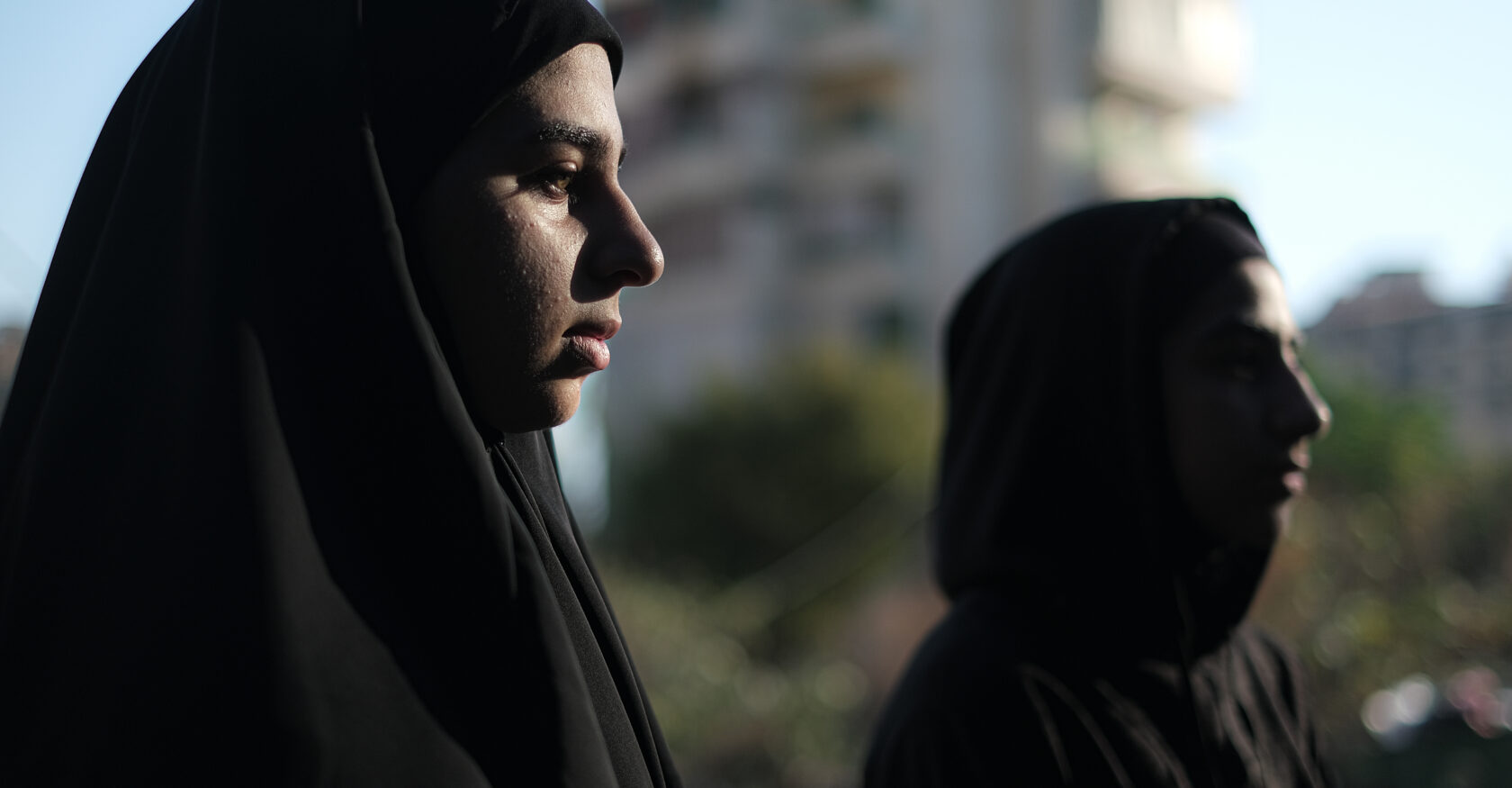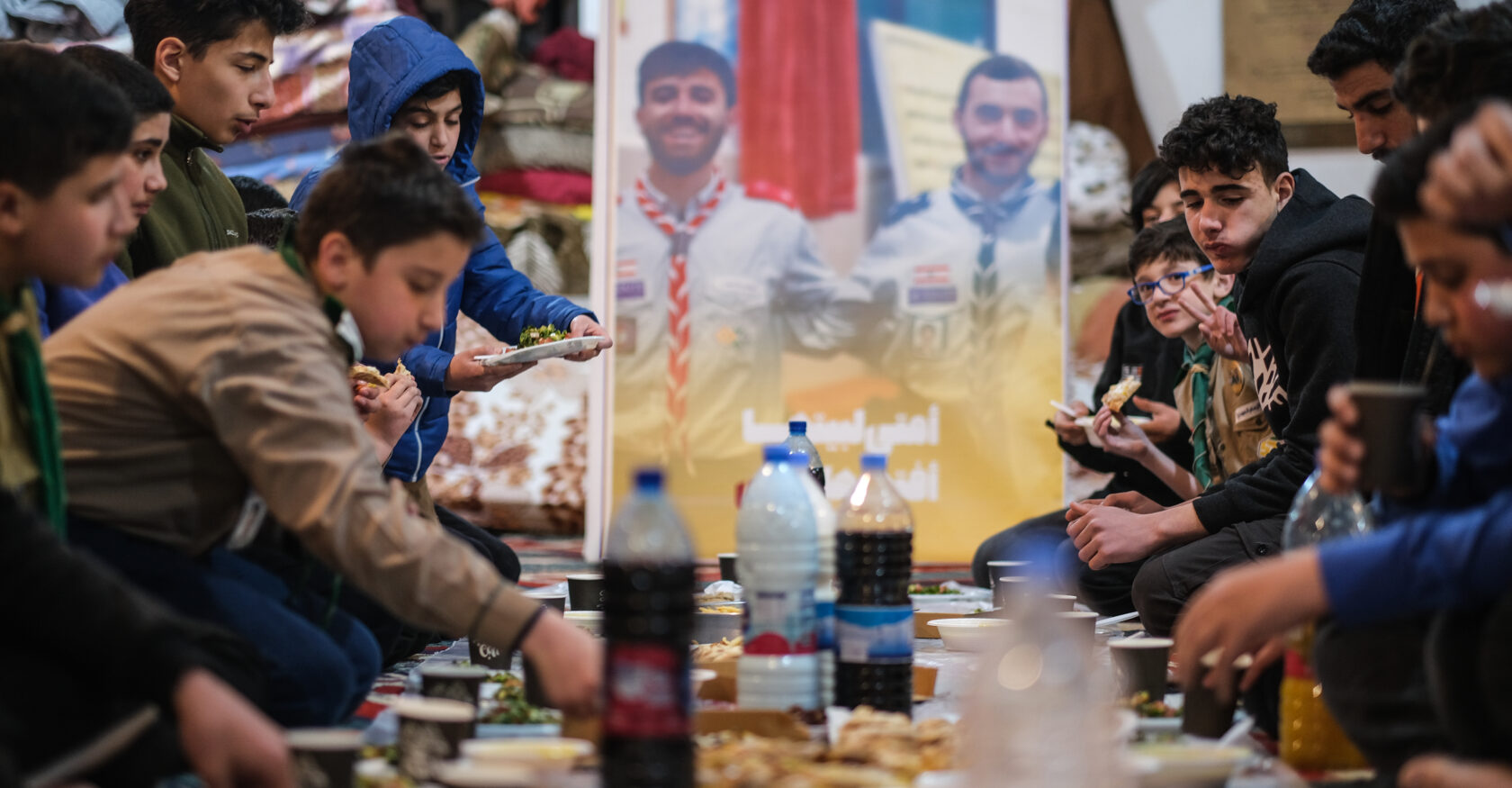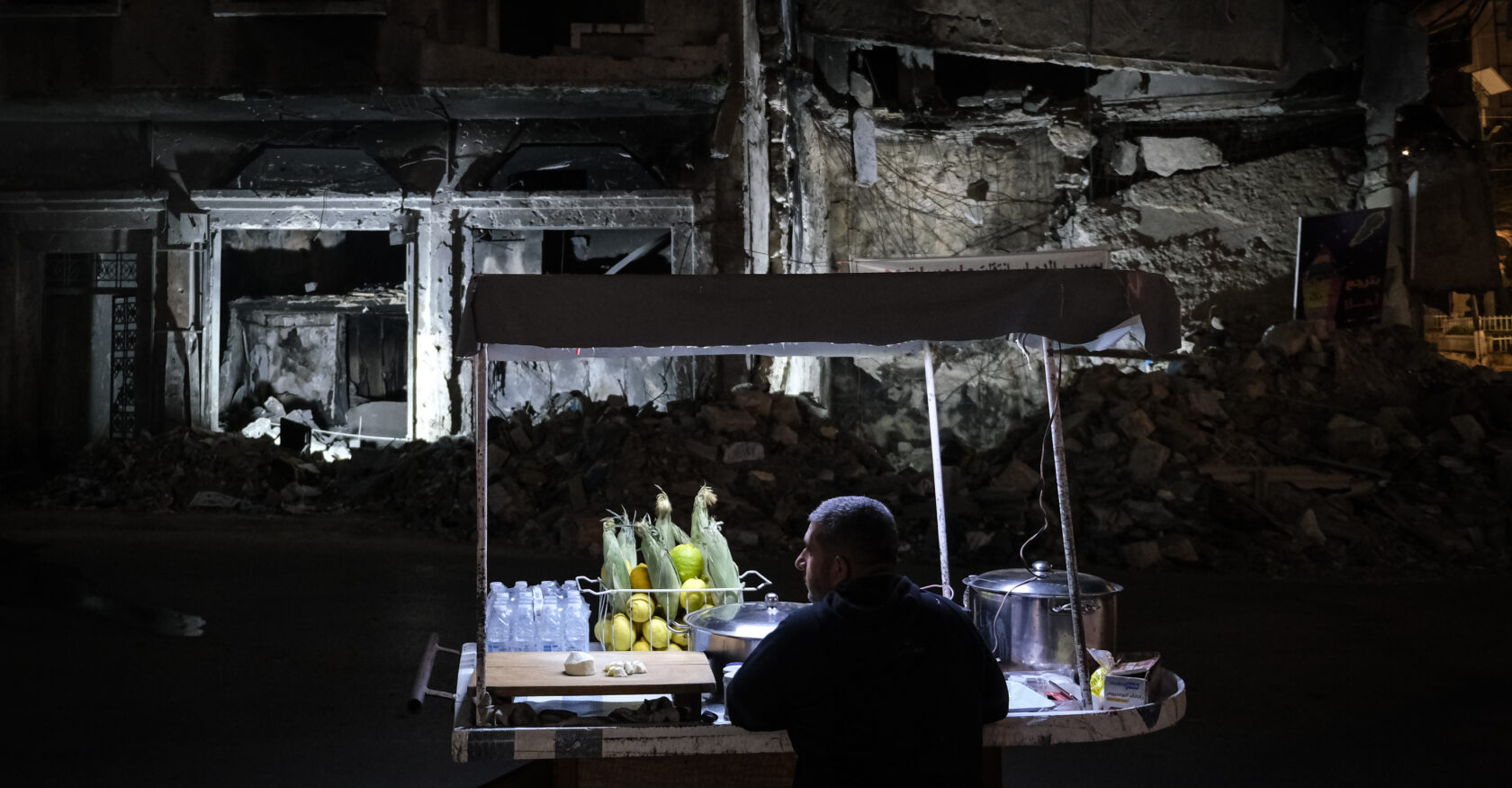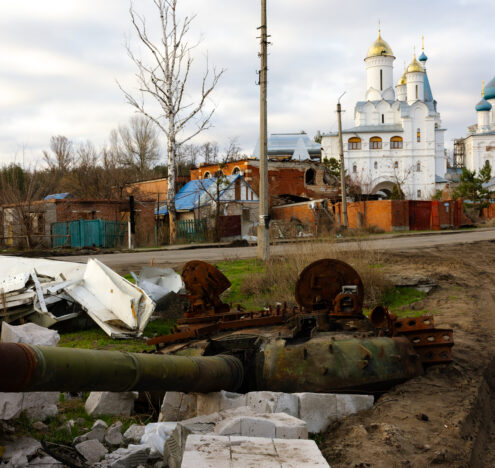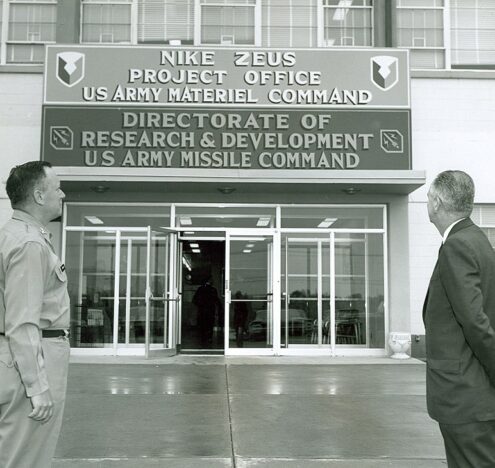The women bring in skewer after skewer of lamb and chicken from the veranda, still smoking from the charcoal grill. Aida, the grandmother and matriarch of the crowded living room, unfurls a blue mat on the floor, then plates, then more plates, topped with salads and stuffed koussa.
Suddenly, the sound of the mosque from outside; sunset call to prayer. In a few minutes, the women and girls in this south Beirut living room will break their Ramadan fast for the day and eat their iftar meal.
In some ways, sisters Batoul and Zahraa al-Sayed, stuffed between cousins and aunties, are lucky they’ve made it this far. The girls, 15 and 12, are from Burj Qalawayh, a village in south Lebanon that for the past year and a half has been in the eye of the storm of deadly Israeli airstrikes.
It started in the days after Oct. 7, 2023, when Hamas-led fighters from Gaza unleashed a shock attack on Israeli territory. Israel launched an all-out assault on the besieged Gaza Strip, targeting hospitals, homes, and displacement camps in an act of genocide that has killed more than 50,000 people.
Israel would also turn its guns on Lebanon, after Hezbollah and allied militants began firing into Israeli territory in support of Hamas’s attack.
To date, more than 4,000 people have been killed in Lebanon — mostly in the south and southern Beirut suburbs where Hezbollah holds sway — but elsewhere too, as fighters and everyday civilians alike fled further north for some safety.
Israel and Lebanon reached a tenuous ceasefire back in November, halting the worst of the onslaught — though Israeli bombs have continued at a steady tempo since then in the south and parts of Lebanon’s eastern Bekaa Valley.
*
The dust has only barely settled in time for Ramadan, the month-long Islamic holiday of fasting, great food, questionably good late-night TV binge-fests and quality time with family.
That’s where I found the Sayed sisters last week, in Laylaki, a vibrant working-class neighborhood south of Beirut that suffered under Israeli strikes last year. They’re up here visiting from their south Lebanon village, to celebrate Ramadan with relatives. To reach them, I passed several concrete apartment blocks still crumbled and mangled where they once stood, others blacked by the fires that erupted during their destruction.
In the Sayed family’s own living room, the women dig into their iftar beneath the “martyr” poster of a relative on the wall — a smiling young man killed by an Israeli airstrike in their home village shortly before the ceasefire.
The family is cheerful inside the Laylaki living room but later, out on the veranda, the girls say Ramadan doesn’t feel quite so happy this year. “I don’t know if it’s because of the war or because we’re getting older,” Batoul, the older of the two sisters, tells me.
“I just want everything to be safe,” Zahraa says.
*
Lebanon is already suffering from six years of financial crisis that decimated its currency and vaporized people’s life savings.
Now, reconstruction and recovery costs following the war are at a whopping $11 billion, the World Bank said this month. On top of that, 96,000 people are still displaced, according to the UN’s refugee agency, eking out a life away from their homes amid soaring rent and food prices.
Hezbollah has promised a total $77 million in cash payments to registered families the war with Israel has affected. As of December, it had already handed out $50 million, the group’s leader Naim Qassem said at the time. Iran is the main financier of the cash aid.



